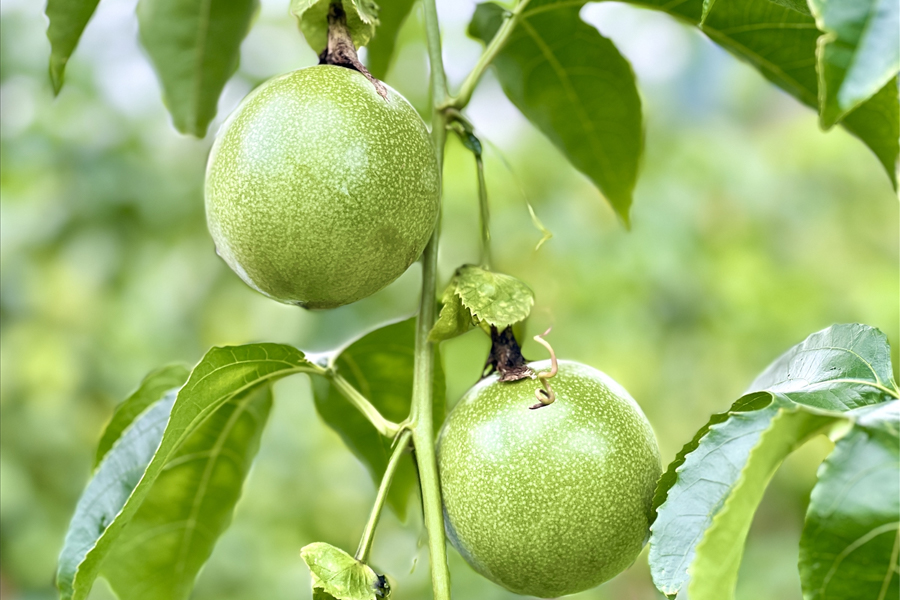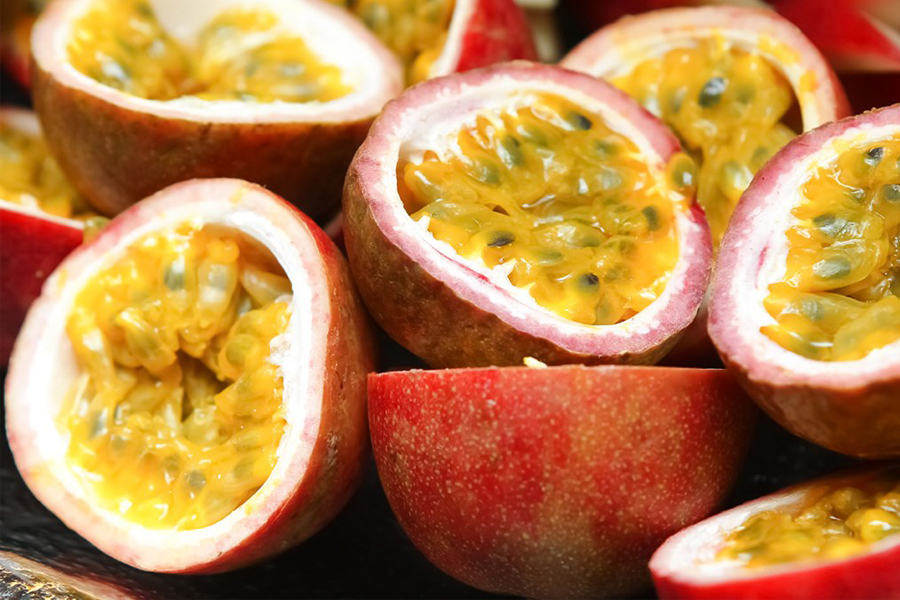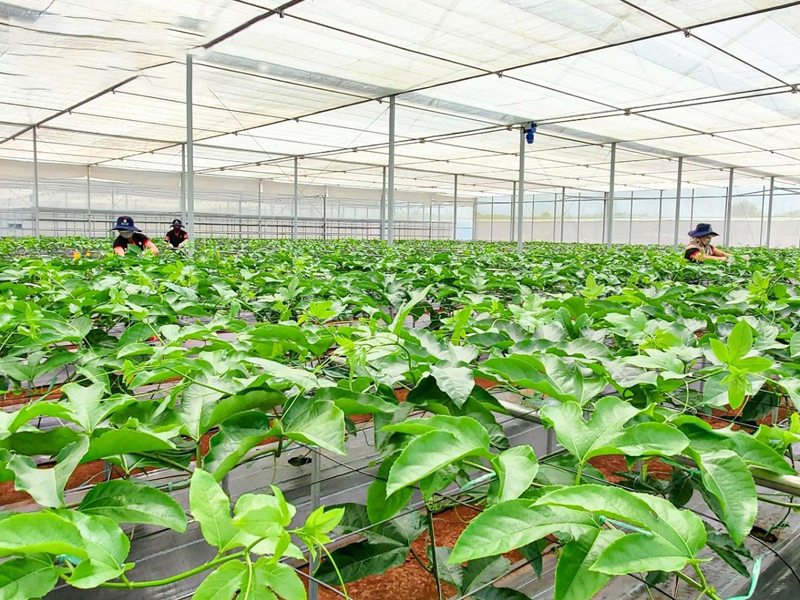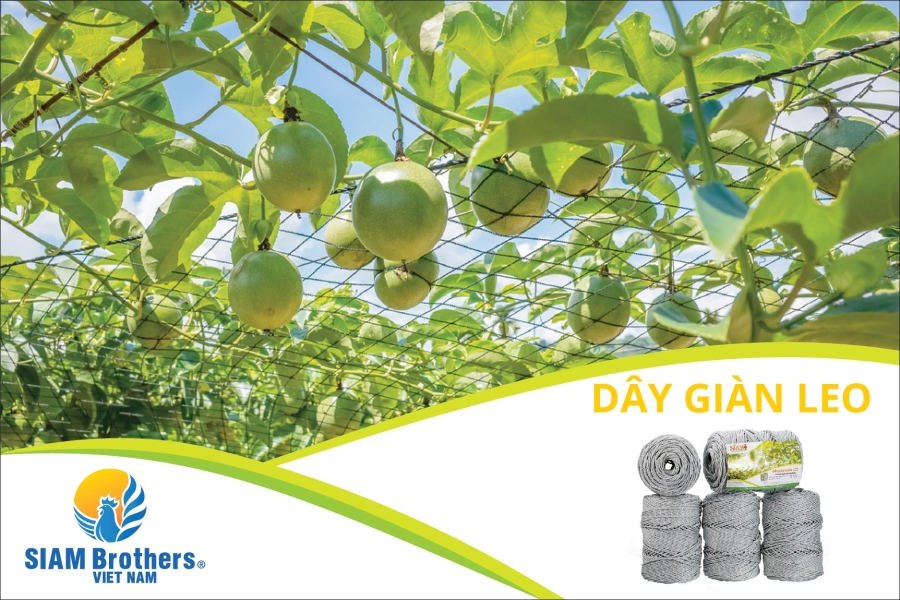Passion fruit is a high-value agricultural product that brings significant profits. It is highly favored both in Vietnam and globally nowadays. Let's briefly explore passion fruit, the model of growing passion fruit, how to make trellises for passion fruit in a greenhouse, and how to choose suitable trellis wires in the article below.
Passion fruit (Passiflora edulis) is a flowering plant belonging to the Passifloraceae family, native to South America. The passion fruit vine is a woody climbing plant that can reach up to 20 meters in height. Its flowers come in yellow, purple, or pink colors, emitting a delicate fragrance. The fruit itself is oval-shaped, approximately 7-10 cm long, with a yellow or purple outer skin. The flesh of the fruit is pale yellow, sweet and tangy, with a slight bitterness.
Passion fruit is a popular tropical fruit cultivated in many countries worldwide, including Vietnam. It offers numerous health benefits, including:
Passion fruit can be consumed fresh, used in smoothies, juices, jams, and other culinary preparations.
Nutritional content of passion fruit:
In 100 grams of passion fruit, you can find:
Benefits of Passion Fruit for Health
Passion fruit is a highly nutritious fruit that offers many health benefits, including:
How to Choose Ripe Passion Fruit
When selecting passion fruit, choose ones with firm, plump skins that are not wrinkled, bruised, or discolored. Ripe passion fruit will have a deep yellow or purple color. You can also gently press the skin with your fingers – if it gives slightly and feels soft, it's ripe.
Storage Tips for Passion Fruit
Passion fruit can be stored in the refrigerator for about 5-7 days. Alternatively, you can cut the passion fruit into sections, place them in a sealed plastic bag, and store them in the refrigerator for about 2-3 days.
Some Recipes and Drinks Using Passion Fruit
Passion fruit can be used to make a variety of delicious and nutritious dishes and drinks, including:
In Vietnam, there are many regions known for large-scale passion fruit cultivation. The largest passion fruit-growing region in the country is in the Central Highlands, particularly in provinces like Gia Lai (which has the largest cultivation area nationwide with 4,263 hectares), Dak Nong, and Kontum. Additionally, passion fruit cultivation is also prominent in the Northwest region, such as in Sơn La province.

Picture 1: Passion Fruit

Picture 2: Purple Passion Fruit
In Vietnam, passion fruit is commonly grown using the traditional method on hill slopes in highland areas, with simple trellises. This model has benefits such as simplicity and low cost. However, it also carries various risks such as climate change, harsh weather conditions, pests, and diseases. Nowadays, many farmers have adopted the greenhouse cultivation model for passion fruit due to its numerous advantages and its ability to address weaknesses inherent in the traditional cultivation model. The greenhouse passion fruit cultivation model involves growing passion fruit in a controlled environment inside a greenhouse, designed to regulate environmental factors such as temperature, light, and humidity to create favorable conditions for passion fruit growth and development. This model offers several superior advantages over outdoor cultivation, including:
Preparation Before Planting
Before planting passion fruit in a greenhouse, the following preparations are necessary:
Cultivation Techniques for Greenhouse Passion Fruit
The cultivation process for greenhouse passion fruit involves the following steps:
Key Considerations for Greenhouse Passion Fruit Cultivation

Passion fruit is a climbing plant, so whether grown outdoors or in a greenhouse, it still requires a trellis to support its growth, flowering, and fruiting. There are many types of trellises, depending on the type of plant being grown. For passion fruit, it's best to build a trellis using a horizontal net positioned 1.5m – 2m above the ground. Details on the trellis design and construction can be found in the article "Guide to Designing Simple and Beautiful Trellises for Climbing Plants". This type of trellis will help passion fruit thrive optimally, with good sunlight exposure and easy harvesting.
Building a Passion Fruit Trellis with Netting
Before starting the trellis construction with netting, survey and measure the area where the trellis is needed to determine the required size. Then, purchase netting of suitable dimensions for that area. Choose netting with large mesh sizes; avoid small mesh sizes. The spacing between mesh holes should be about 15-20 cm.
In addition to the netting, prepare tying wires to stretch and secure the netting. Steel wires or small ropes can be used as tying wires. Alternatively, nylon ropes can also be used for tying the netting.
After preparing the tying wires and netting, find a suitable location to erect the trellis. This location should be approximately 2 meters high and allow for tying the netting to keep it elevated.
Ensure not to choose a location that is too low, as the trellis may sag later and not be tall enough. If you don't have a location for tying the netting, you can construct a trellis frame or use some tall bamboo stakes to erect and secure the netting.
The Netting Once you've found a suitable location, use the tying wires to secure the corners of the netting to the predetermined positions. Simultaneously, use additional tying wires to secure the edges of the netting, ensuring the netting can withstand the weight of the trellis.
To prevent the trellis from sagging when the passion fruit vines climb up, you may consider using a wooden rod as a mid-support for the trellis, helping to keep the trellis higher and prevent excessive sagging.
Selecting the appropriate trellising wire for passion fruit is a crucial step that determines the quality of the trellis, avoiding situations such as wire breakage, collapse, or trellis failure. Currently, there are many manufacturers producing trellising wires with various price points and qualities. A helpful tip for choosing the right trellising wire is to purchase products from reputable, long-standing manufacturers in Vietnam. This ensures peace of mind when making purchases. Additionally, consider certifications for quality and environmental standards. Siam Brothers Vietnam is a leading manufacturer of ropes in Vietnam, with nearly 30 years of establishment and development. Their main agricultural rope products include trellising wires, straw bale tying ropes, banana tree support ropes, anti-collapse ropes, greenhouse ropes, among others. Moreover, they hold quality certifications such as ISO 14001, ISO 9001, and environmental protection certifications. (For details on certifications, refer to the "Quality Management System" section).

Customers who are in need of trellising wires for passion fruit can contact Siam Brothers Vietnam through the following communication channels: